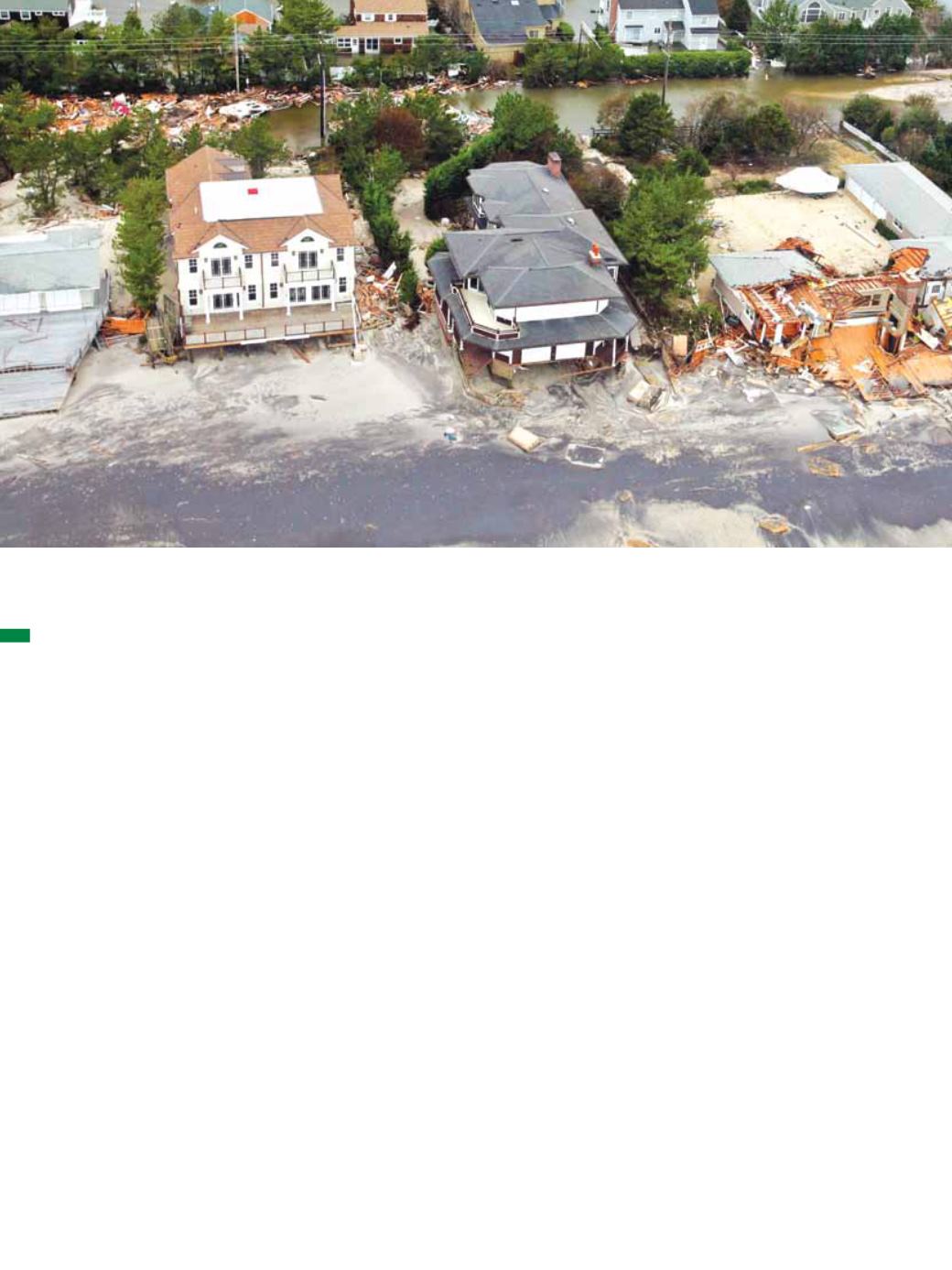
47
2016
( - يونيو
373
العدد )
الجمعية الكويتيه لحماية البيئة
البيئة
storm.
The cascading effects of these
impacts—storm surge, heavy
winds, and flooding due to
rainfall—create injury and
death; collapse structures
that can require intense
search and rescue efforts;
destroy infrastructure and
essential services; deprive
the populace of power, water,
and food supplies; and have
an impact on the capabilities
of police, firefighting,
and emergency medical
services. The destruction of
homes creates significant
mass care considerations
regarding providing housing
and essential services. And
economic impacts such as
losses to businesses and the
costs of recovery contribute
to the reasons explaining
why cyclonic systems are so
devastating.
To understand the destructive
mechanisms of cyclones,
analysts must make storm
surge and wind speed
projections along the coast—
the most likely areas to be
adversely affected—and then
project rainfall amounts both
along the coast and inland to
determine the potential for
flooding. To this end, the U.S.
Army Corps of Engineers
conducts engineering studies
on potential storm surge based
on the strength of cyclone
using the Saffir-Simpson scale.
The Sea, Lake, and Overland
Surges from Hurricanes
(SLOSH) model is a
computerized numerical model
developed by the National
Weather Service to estimate
storm surge heights resulting
from historical, hypothetical,
or predicted hurricanes by
accounting for atmospheric
pressure and cyclone size,
forward speed, and track data.
These parameters are used to
create a model of the wind field
that drives storm surge.
The SLOSH model consists
of a set of physics equations
applied to a specific locale’s
shoreline, incorporating unique
bay and river configurations,
water depths, bridges, roads,
levees, and other physical
features to provide storm surge
estimations that are mapped
using GIS tools. Together,
these mechanisms helped
define impacted areas in the
state.
Now we had to understand the
so what. If we estimate storm
surge at 2 to 5 meters, winds in
excess of 110 to 130 kph, and
rainfall in the range of 100 to
300 millimeters, what would
be the impact?
Consequence
(Or the So What?)
Historical data on past storm
impact was useful in projecting
potential consequences in


